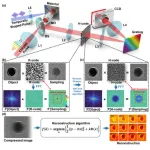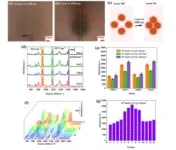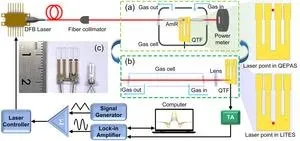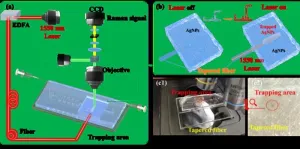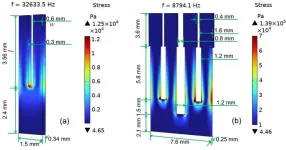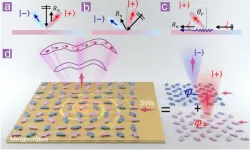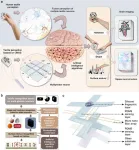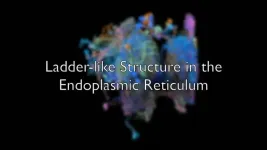A new publication from Opto-Electronic Advances; DOI 10.29026/oea.2025.240180 , discusses high-frequency enhanced ultrafast compressed photography technology.
Single-shot ultrafast imaging technology can characterize transient events under a wide range of conditions. It opens the door to explore the unrepeatable or difficult to reproduce ultrafast phenomena such as photosynthesis at the molecular or atomic scale in nature and the precision manufacturing of semiconductor chips. It is a scientific tool to explore the microscopic unknown field. The vast majority of ultrafast processes in the microscopic world have high complexity in the time dimension. A single ultrafast phenomenon may involve multiple physical mechanisms at different time scales. In order not to lose the key information in the whole observation window, the realization of large frame number ultrafast observation is an indispensable condition for the current ultrafast imaging technology. The traditional pump-probe technology requires that the observed dynamic events must be accurate and repeatable, which limits its application in random or unstable ultrafast phenomena. The single-shot multi-frame active imaging technology developed in recent years can study the unrepeatable ultrafast process. However, due to the limitation of the optical system, with the increase of the time complexity of the observed object, it is difficult to take into account the high time resolution, high imaging frame rate and large frame number at the same time.
The combination of ultrafast compressed imaging technology and computational imaging is the most promising technical approach to realize ultrafast imaging of large frames in a single-shot. However, the spatial resolution of the image will decrease with the increase of the number of frames in the reconstruction of ultrafast events. This brings great challenges to the observation with both high spatial complexity and high time complexity.
The authors of this article proposed a high-frequency enhanced ultrafast compressed photography (H-CAP) method. This method projects the microscopic ultrafast phenomenon onto a special coding in the spatial domain, and skillfully extracts the high-frequency information of the microscopic ultrafast phenomenon, which solves the problem of high-frequency information blurring caused by traditional ultrafast compressed imaging. The specific implementation method is to eliminate the cluster of black pixels and white pixels by rearranging the structural distribution of the traditional random coding, and obtain a high-frequency enhanced random coding that can suppress low-frequency noise in the Fourier transform domain. Generally speaking, the coding plays the role of information coding in the spatial domain, and in the spectral plane of its Fourier transform, it plays the role of high-frequency enhancement filter. The code has a more uniform structure distribution, which highly satisfies the reconstruction characteristics of compressed sensing. It retains the high-frequency component when collecting the ultrafast phenomenon at the front-end, which can improve the signal-to-noise ratio in the case of large frame acquisition.
Using this method, the team successfully captured the ultrafast process of dual-pump pulse ablation of silicon surface. In the observation time window of 220 frames and 300 ps, it is observed that the ablation enhancement effect caused by double pulses becomes more and more obvious with the increase of delay time between pulses. This is due to the ability of H-CAP to obtain high-frequency information. In addition, the relative reflectivity curves of the excitation region center with time under different pulse delays by the reconstructed two-dimensional images not only reflect the change of plasma density during the interaction between laser and material but also understand the change of material state.
This research provides a new method to observe the ultrafast process with high space-time complexity under a large number of frames, which marks a significant progress in ultrafast compressed imaging. It is expected to become a new method for non-repeatable dynamic processes such as ultrafast laser-matter interaction, ultrafast light field measurement or ultrafast demagnetization.
Keywords: ultrafast compressed imaging / high-frequency enhanced sampling / spectral-temporal transform / transient processes / high-fidelity reconstruction
Introduction
# # # # # #
Feng Chen is a Professor at Xi'an Jiaotong University and a PhD supervisor. He serves as the Director of the Shaanxi Key Laboratory of Photonic Technology for Information and the Deputy Director of the International Joint Research Laboratory for Micro/Nano Manufacturing and Measurement Technologies under the Ministry of Education. He is also the associate editor of Ultrafast Science and a member of the editorial boards of journals such as Chinese Optics Letters and Acta Photonica Sinica. Additionally, he holds positions as the deputy director of the Optical Precision Molding Professional Committee of the China Society for Imaging Science and Technology and the vice chairman of the Xi'an Laser and Infrared Society.
Professor Feng Chen’s primary research directions encompass femtosecond laser micro/nano manufacturing, laser biomimetic micro/nano manufacturing, ultrafast photonics, and micro/nano photonics. In these fields, he has conducted extensive original research, proposing innovations such as three-dimensional femtosecond laser micro/nano manufacturing of hard and brittle materials, femtosecond laser biomimetic micro/nano manufacturing, and time-frequency conversion ultrafast imaging. He has also pioneered and developed technologies including femtosecond laser-prepared biomimetic super-wetting surfaces, femtosecond laser wet etching, time-frequency conversion femtosecond ultrafast imaging, and femtosecond laser flexible electronics manufacturing. Professor Chen has published over 300 papers in academic journals such as Chemical Society Reviews, Advanced Functional Materials, and Physical Review Letters. He has been recognized as a top 1% highly cited scientist by RSC and is listed among the world's top 2% scientists. More than 30 of his papers have been selected as cover articles by international academic journals. Currently, his team consists of 6 staff members, 18 PhD students, and 16 master's degree candidates.
# # # # # #
Opto-Electronic Advances (OEA) is a rapidly growing high-impact, open access, peer reviewed monthly SCI journal with an impact factor of 15.3 (Journal Citation Reports for IF2023). Since its launch in March 2018, OEA has been indexed in SCI, EI, DOAJ, Scopus, CA and ICI databases over the time, and expanded its Editorial Board to 34 members from 17 countries.
# # # # # #
More information: http://www.oejournal.org/oea
Editorial Board: http://www.oejournal.org/oea/editorialboard/list
All issues available in the online archive (http://www.oejournal.org/oea/archive).
Submissions to OEA may be made using ScholarOne (https://mc03.manuscriptcentral.com/oea).
ISSN: 2096-4579
CN: 51-1781/TN
Contact Us: oea@ioe.ac.cn
Twitter: @OptoElectronAdv (https://twitter.com/OptoElectronAdv?lang=en)
WeChat: OE_Journal
# # # # # #
Meng YZ, Lu Y, Zhang PF et al. High-frequency enhanced ultrafast compressed active photography. Opto-Electron Adv 8, 240180 (2025). doi: 10.29026/oea.2025.240180
END
